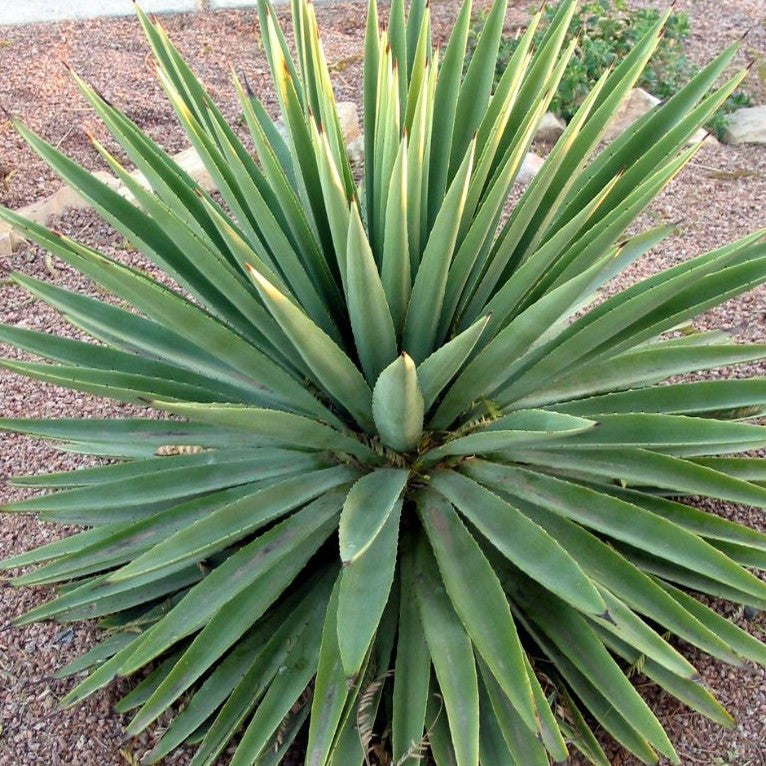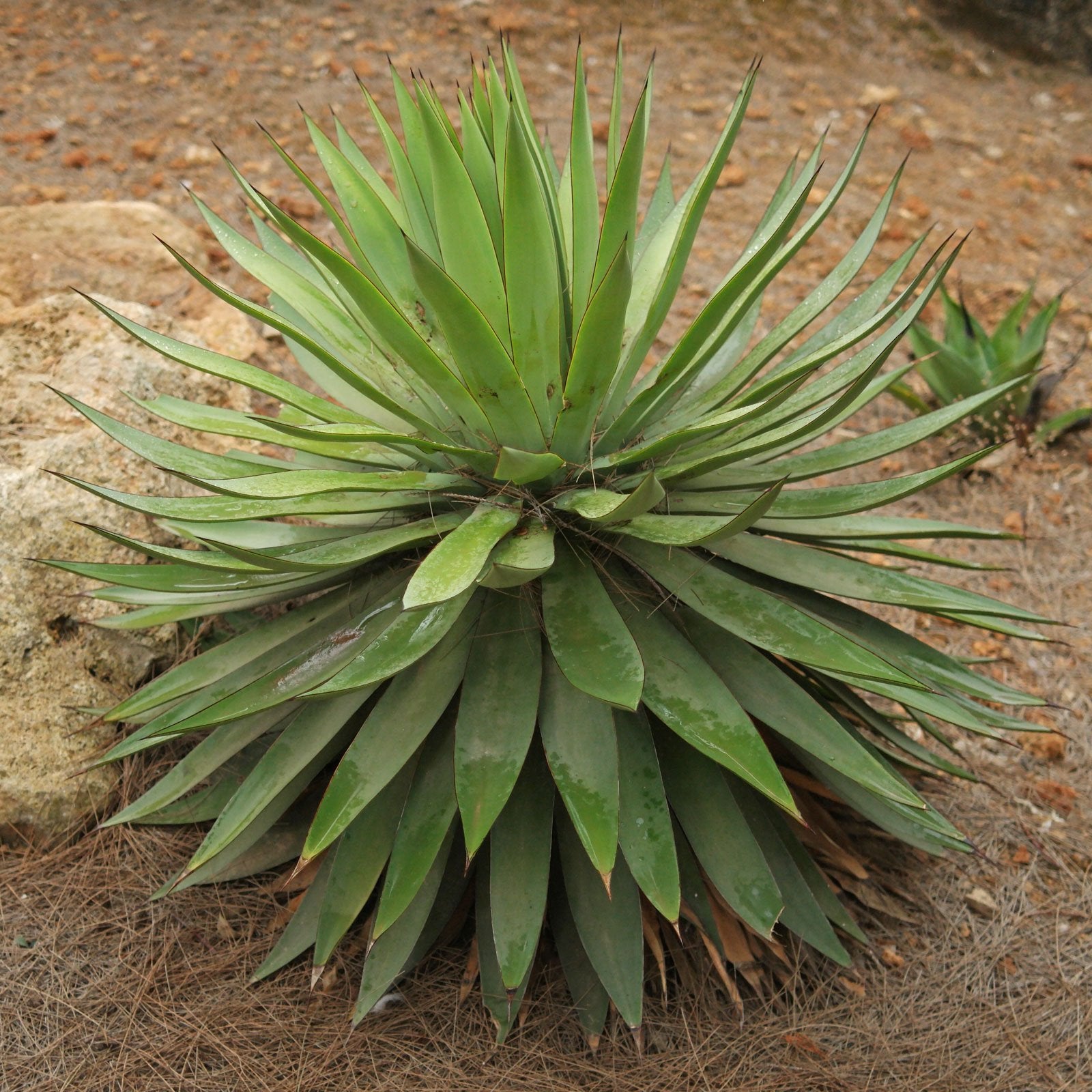Agave vivipara
Family
Aspaeagaceae
Native
Mexico
Description
Agave angustifolia (Caribbean Agave) is a medium sized agave - 4 feet tall by 4 feet wide with a dense rosette, rounded in outline, atop a short trunk 1 to 2 feet tall that is usually hidden until plants get some age (about when they bloom!). The 2 foot long leaves are fairly stiff, narrow (2-4 inches) and concave towards the middle with a broad central band colored light green to greyish-green or bluish-grey in colour,
The massive flower clusters (1-2 m long) are borne at the top of a very robust flowering stem. These flower clusters have 10-20 branches, with the branches being further divided towards their tips (i.e. they are terminal panicles). Individual flowers are borne in an upright (i.e. erect) position on short stalks (i.e. pedicels). These greenish-yellow flowers (5-6.5 cm long) are borne in groups towards the tips of the branches. They have six 'petals' (i.e. perianth segments or tepals) that are fused together at the base into a short tube (8-16 mm long) with spreading lobes (18-24 mm long). The flowers also have six very large stamens, consisting of stalks (i.e. filaments) 3.5-4.5 cm long and yellow anthers (20-30 mm long). They also have a large ovary topped with a style and three stigmas.
Environment
Agaves need full sun and gritty soil that percolates easily. They can even do quite well when potted but use an unglazed clay pot that will allow evaporation of excess moisture.
Water needs are moderate to light depending upon the heat of the season but the Cactus should be allowed to dry out before irrigation
In growing season they benefit from the application of a granulated time release fertilizer that will provide nutrient to the plant.
Landscape Uses
It is also a popular landscape plant in beach gardens
























